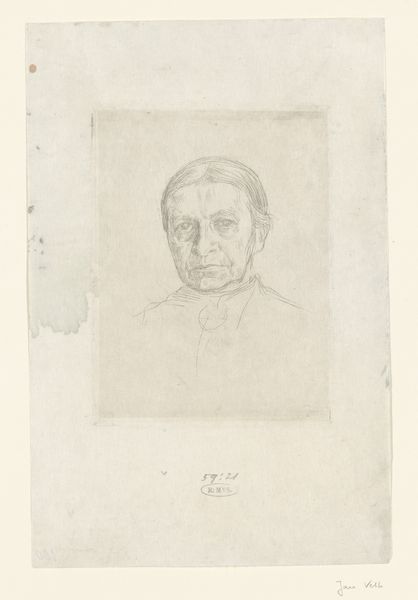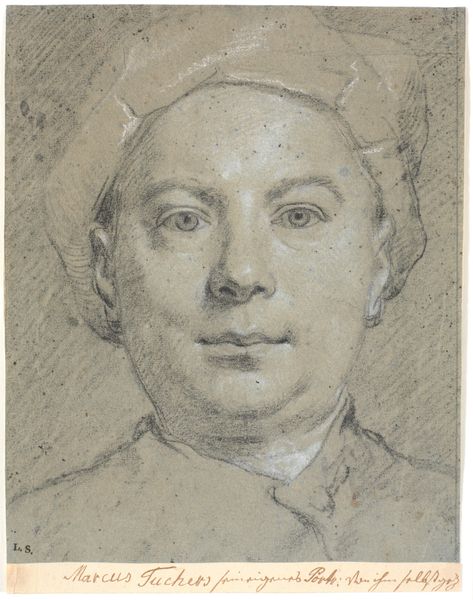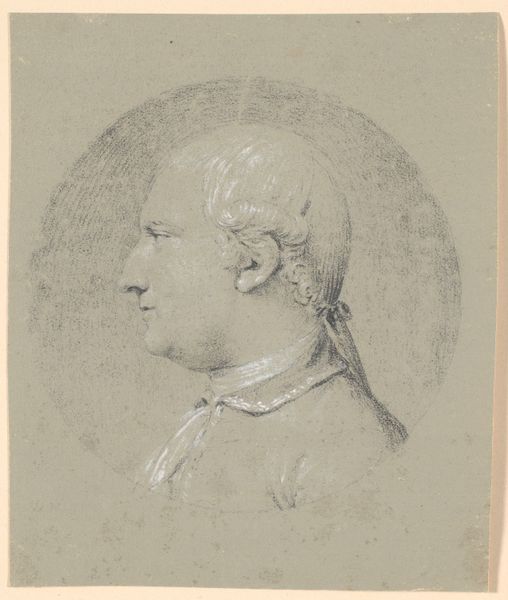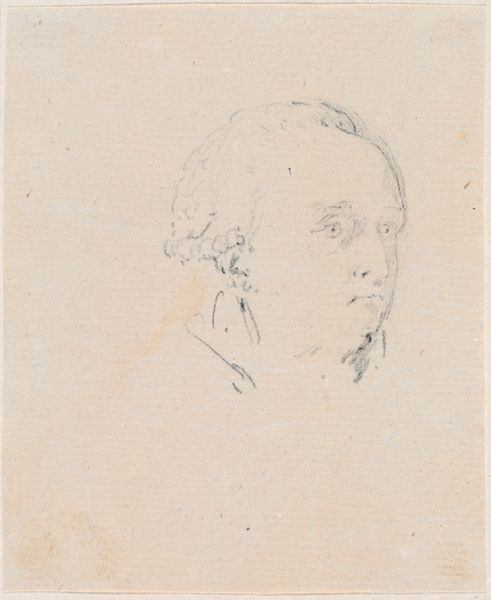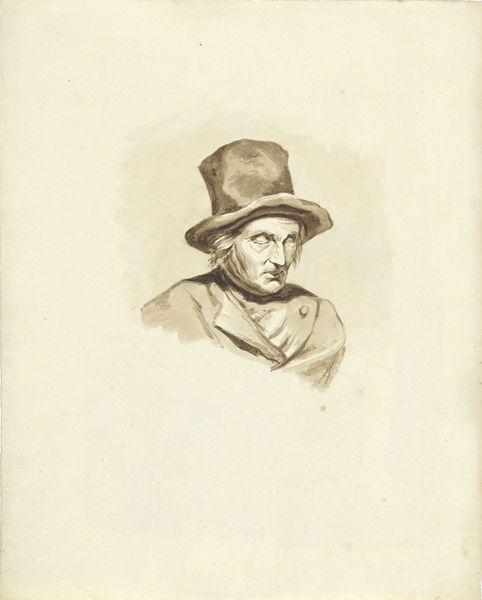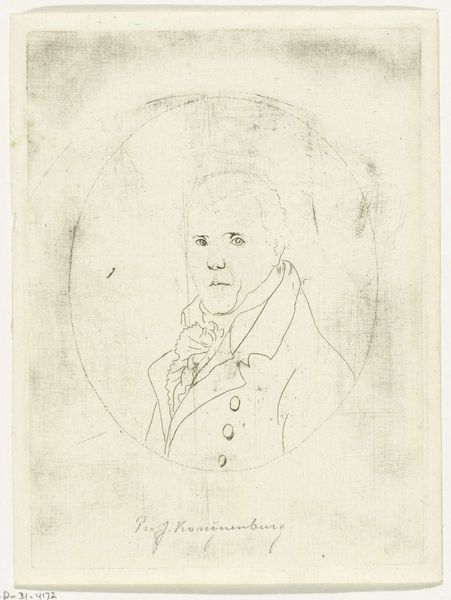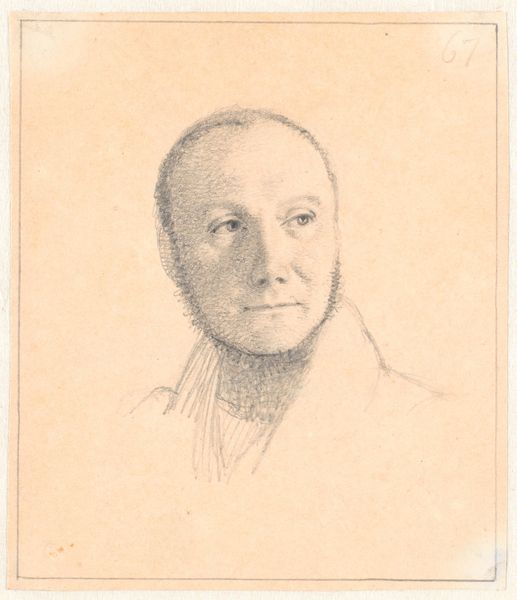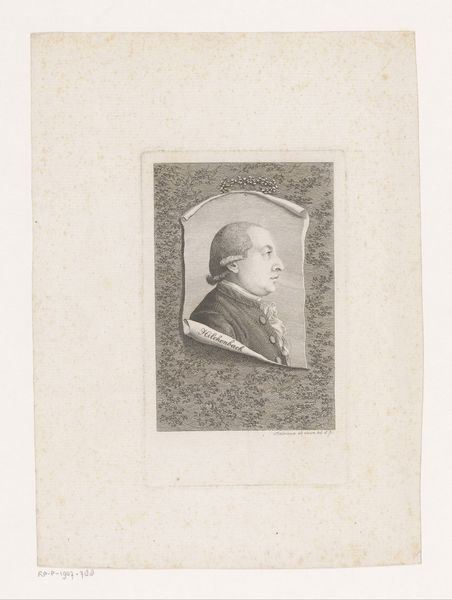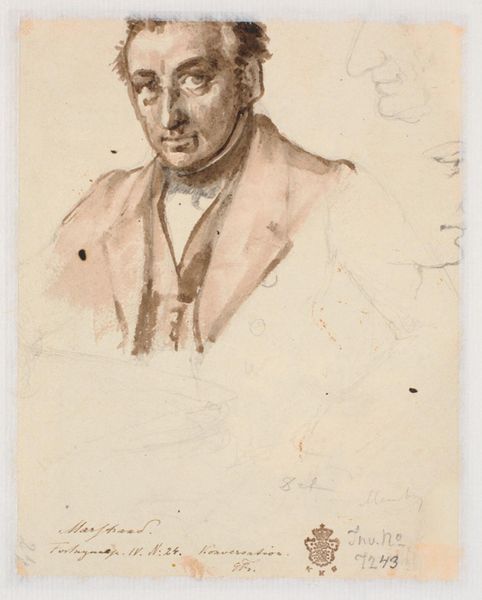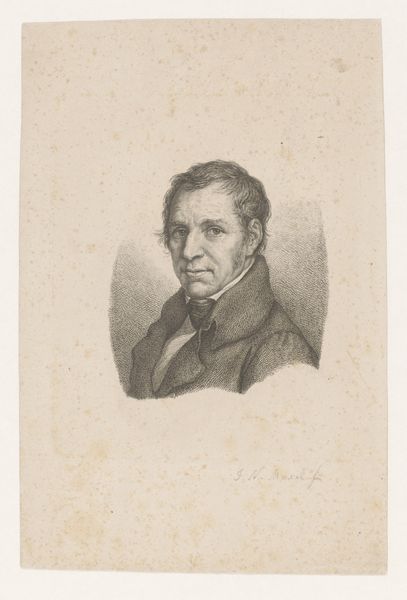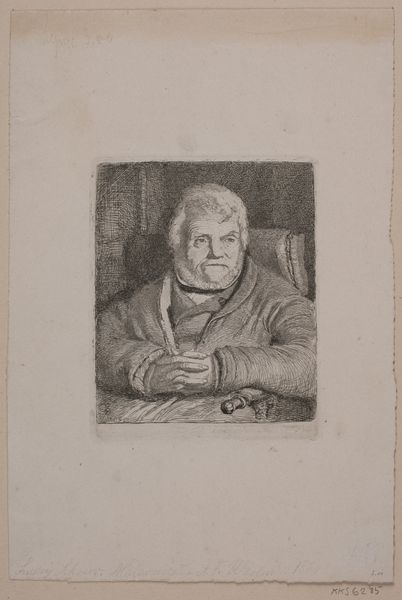
drawing, pencil
#
portrait
#
drawing
#
caricature
#
pencil drawing
#
pencil
#
realism
Dimensions: height 385 mm, width 241 mm
Copyright: Rijks Museum: Open Domain
Curator: At first glance, I see someone stern, though his eyes betray a hint of melancholy. Editor: It’s a fascinating glimpse into 1777, isn't it? We are looking at a pencil drawing titled "Portret van Jan Conrad Brandes". It’s thought to be the work of Jan Brandes himself. What do you see beyond the initial emotion? Curator: I'm drawn to the textures, surprisingly vivid for just pencil. You can almost feel the weave of the fabric in his cap and coat. It speaks of simplicity, a kind of lived-in comfort. Almost feels raw. I want to reach out and feel that cloth, almost like tracing history itself with my fingers. Editor: Absolutely. And consider the labor that goes into each pencil stroke, building up the image, defining the planes of the face. Pencil was a fairly common material even then. Think of the accessibility – the sitter could theoretically participate in its making. No master-artist involved. What's the significance, though, of such close attention to those textures and the fall of light on those simple surfaces? Curator: Perhaps it is more personal, a reflection of the man’s inner world made manifest through careful strokes. Those shadowed eyes peering out at you. There is so much character there in that rough-hewn fabric of the sitter’s coat, it suggests someone indifferent to pomp, and instead embraces humble existence. I sense that he knew exactly what to reveal, what to conceal, didn’t he? A beautiful self-authored image. Editor: Perhaps. It also tells us something about how people wished to be portrayed. This isn't the grandiosity of oil paint. The focus is instead on the individual, simply rendered. He's positioned as someone who perhaps valued the practical and tangible aspects of his world over pure artistry or the flamboyance of nobility, what do you think? Curator: Perhaps that carefulness mirrors Jan’s own quest for truth and authenticity within himself and those around him. The work suggests a search for profundity within the most accessible mediums and subjects. A desire to transform the ordinary. What seems mundane or readily accessible can become a vessel to express profound truths and human experience. Editor: It reminds us to look closer at what we often overlook, doesn’t it? Curator: Yes, absolutely. Now I feel even more aligned and grateful, seeing the world through this 18th-century looking glass. Editor: Indeed. It encourages me to be less focused on labels.
Comments
No comments
Be the first to comment and join the conversation on the ultimate creative platform.
